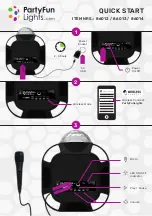
INPUT VOLTAGE AND PRECHARGE
The Power Wave 455/R can be connected for a variety
of three-phase input voltages. Refer to Figure E.2.
The initial input power is applied to the Power Wave
455/R through a line switch located on the front of the
machine. Two phases of the three-phase input power
are applied to the Input Board and both auxiliary trans-
formers. The various secondary voltages developed
by transformer T1 are applied to the Input Board, the
fan motor (via a control relay) and the Bus Board recti-
fier. The 65VDC produced from the Bus Board rectifi-
er is used by the Bus Board to provide various DC volt-
ages for the Power Board, the Feed Head Board and
the wire feeder receptacle. The 115/230VAC devel-
oped on the secondary of auxiliary transformer T2 is
applied to the 115VAC receptacle and to the water
cooler receptacle.
The two phases that are connected to the Input Board,
through the input line switch SW1, are connected to the
input rectifier through the CR1 precharge relay. During
the precharge or "soft start" sequence, these two phas-
es are current limited by the Input Board. The AC input
voltage is rectified, and the resultant DC voltage is
applied through the reconnect switches to the input
capacitors located on the right and left switch boards.
The Control Board monitors the voltage across the
capacitors. When the capacitors have charged to an
acceptable level, the Control Board signals the Input
Board to energize the main input contactor, making all
three phases of input power, without current limiting,
available to the input capacitors. At this point the
Power Wave 455/R is in the "Run Mode" of operation.
If the capacitors become undervoltaged, overvoltaged,
or unbalanced, the Control Board will signal the Input
Board to de-energize the main input contactor, and the
Power Wave 455/R will be disabled. See Figure E.2.
E-3
E-3
THEORY OF OPERATION
POWER WAVE 455/R
Retur
n to Section TOC
Retur
n to Section TOC
Retur
n to Section TOC
Retur
n to Section TOC
Retur
n to Master TOC
Retur
n to Master TOC
Retur
n to Master TOC
Retur
n to Master TOC
















































